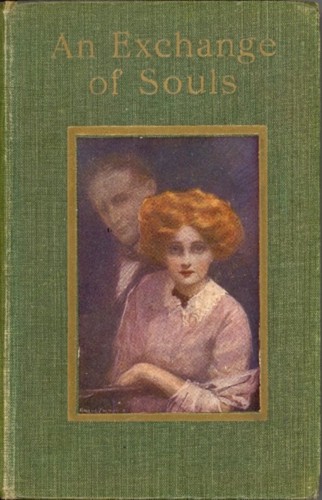 By BARRY PAIN (Eveleigh Nash; 1911)
By BARRY PAIN (Eveleigh Nash; 1911)
A novel that’s best known today as an alleged inspiration on H.P. Lovecraft’s “Thing on the Doorstep,” AN EXCHANGE OF SOULS also anticipates Michael Blumlein’s horrific gender-swap classic X,Y in its account of a mad doctor who becomes trapped in his fiancée’s body after a soul-switching experiment goes wrong.
The first hundred pages can be speed read without missing any important details. They introduce Dr. Daniel Myas, a brilliant medical practitioner whose recent years have been spent on macabre research involving dying people, in an attempt at conclusively proving the existence of the soul. The narrator, a self-described “plain Englishman” (plain being the operative word), is unwisely drawn into Myas’ orbit, with the latter’s fate foreshadowed by a passage in which he attempts to take his appalled friend to see a performance by a female impersonator.
As for Myas’s fiancée Alice Lade, she’s a beautiful woman, but their engagement is strictly a matter of convenience. Myas views her as little more than an experimental subject, and she obliges in the above mentioned soul swap that concludes with Myas ending up in Alice’s body and she in his, which promptly expires from a heart attack.
The protagonist’s knowledge of this event is initially limited to the fact that Myas has died unexpectedly and Alice has undergone some unsettling behavioral changes. Modern readers will have no difficulty figuring out precisely what has occurred (the title gives it away), but of course it takes the narrator some time to learn of and accept the “exchange.” However, he defends Alice when she’s falsely accused of murdering her fiancée, correctly sensing that something uncanny is afoot.
The most interesting portion occurs in the novel’s final third, after Myas’s “secret” is revealed. His existence in Alice’s body, in which he suffers intense pain and finds his mind absorbing many of her personality quirks, is one of unremitting horror, albeit with a definite freakish fascination for the reader. It’s here that the author’s curiously logical and scientific imagination really comes into play—I’m not sure, however, if that’s fair compensation for what is in all other respects a painfully dated and monotonous account.
